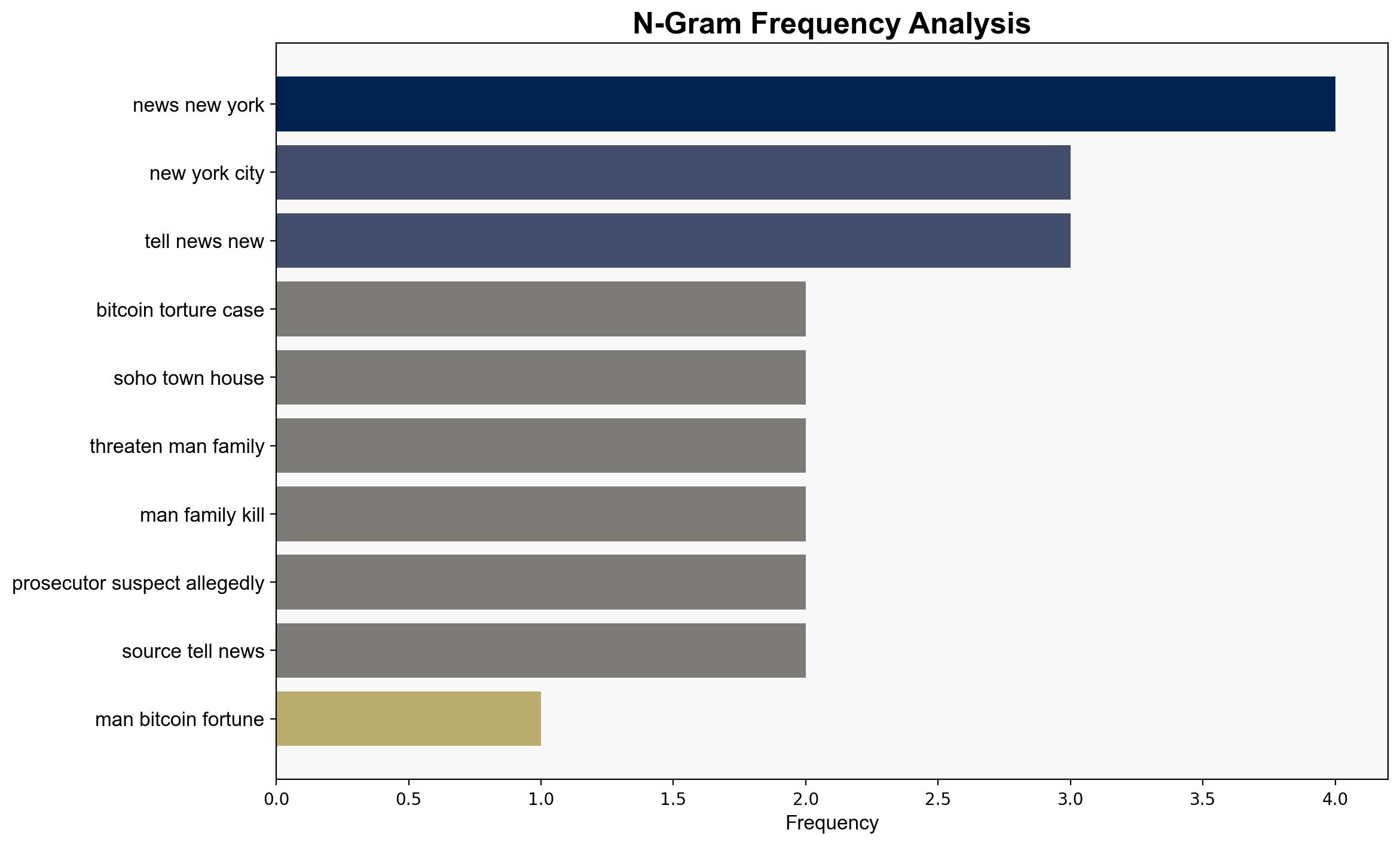What we know about the bitcoin torture case in New York City – CBS News
Published on: 2025-05-30
Intelligence Report: What we know about the bitcoin torture case in New York City – CBS News
1. BLUF (Bottom Line Up Front)
The investigation into the alleged bitcoin torture case in New York City reveals a complex criminal operation involving kidnapping, torture, and extortion. Key findings indicate the involvement of cryptocurrency investors and potential security lapses within law enforcement. Recommendations focus on enhancing cybersecurity measures, improving inter-agency communication, and addressing potential insider threats.
2. Detailed Analysis
The following structured analytic techniques have been applied to ensure methodological consistency:
Cognitive Bias Stress Test
The assessment identifies potential biases in initial reports, ensuring a comprehensive understanding of the case’s complexity. Red teaming exercises challenge assumptions about the motivations and capabilities of the suspects.
Bayesian Scenario Modeling
Probabilistic forecasting suggests a moderate likelihood of further criminal activities linked to cryptocurrency exploitation, with potential for escalation if not addressed.
Network Influence Mapping
Mapping reveals connections between the suspects and broader criminal networks, highlighting the need for targeted disruption strategies.
3. Implications and Strategic Risks
The case underscores vulnerabilities in cryptocurrency security and law enforcement protocols. There is a risk of similar incidents if systemic issues are not addressed. The involvement of law enforcement personnel raises concerns about insider threats and the integrity of security operations.
4. Recommendations and Outlook
- Enhance cybersecurity protocols for cryptocurrency transactions and storage.
- Strengthen inter-agency communication to prevent insider threats and improve response times.
- Conduct scenario-based training for law enforcement to handle complex, tech-driven criminal activities.
- Best Case: Improved security measures prevent further incidents. Worst Case: Escalation of similar crimes due to inadequate response. Most Likely: Incremental improvements with ongoing challenges.
5. Key Individuals and Entities
John Woeltz, William Duplessie
6. Thematic Tags
national security threats, cybersecurity, counter-terrorism, regional focus




